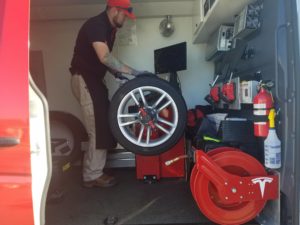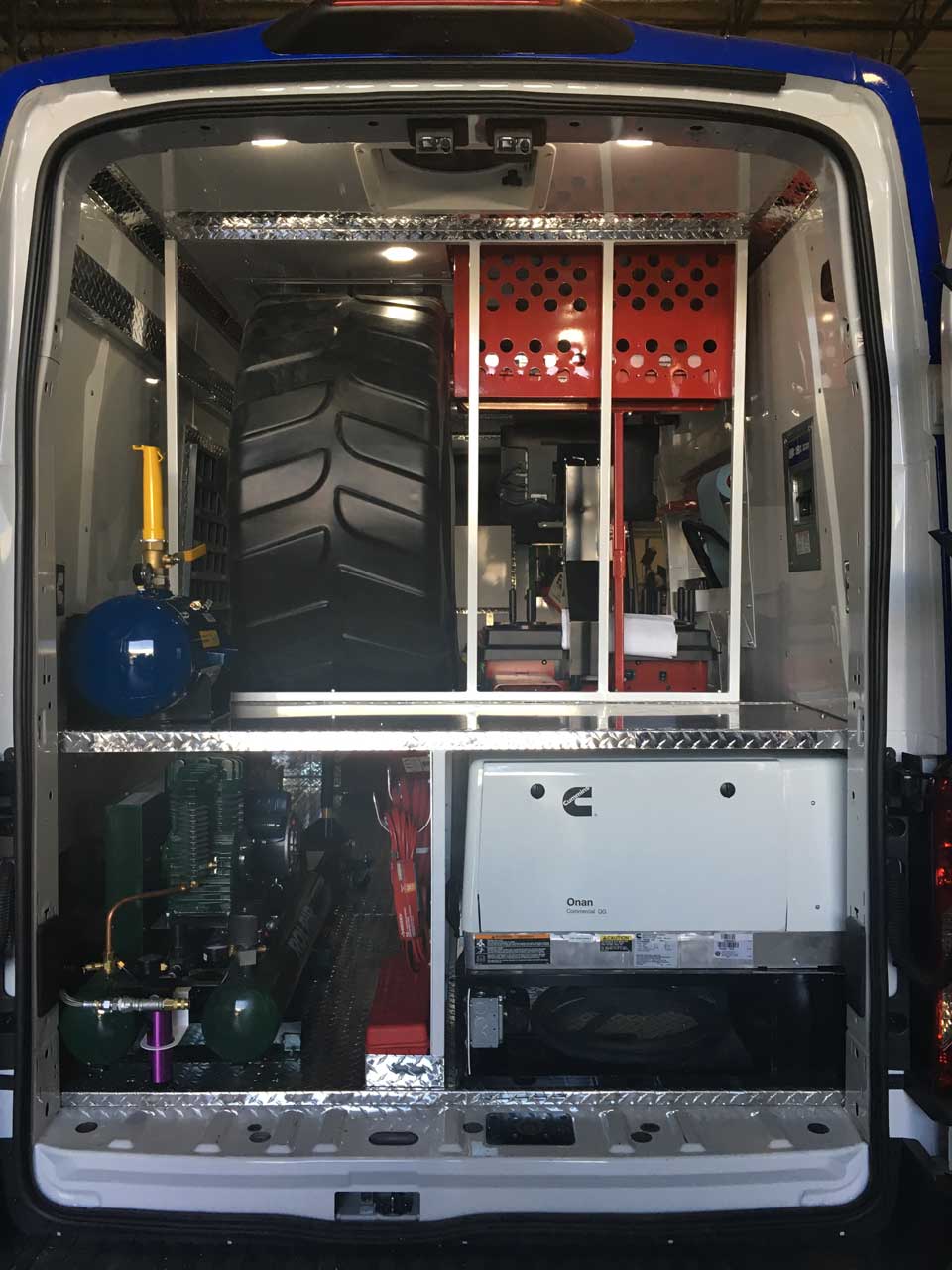Practical Mobile Tire Service in Las Vegas at Your Doorstep
Tire Solution: Proven Approaches for Optimum Tire Maintenance and Treatment
From making sure correct tire stress to regular turning and placement, there are tried and tested techniques that can significantly expand the life expectancy of your tires and enhance total driving experience. Allow's dive right into the globe of tire service and discover the secrets to keeping your tires in top-notch shape for the lengthy haul - Mobile Tire Change Las Vegas.
Relevance of Tire Pressure
Proper tire stress is an essential variable in ensuring optimum automobile performance and safety on the road. Maintaining the advised tire pressure degrees given by the supplier uses many advantages. First of all, sufficient tire pressure promotes far better gas efficiency, as under-inflated tires can lead to increased rolling resistance, creating the engine to work tougher and eat more fuel. Correct tire pressure makes certain also tread wear, boosting tire longevity and saving money in the lengthy run by delaying the demand for premature replacements. Furthermore, correctly blew up tires add to boosted handling and stopping abilities, essential for secure driving in various roadway problems. Over-inflated tires, on the other hand, can lead to reduced grip and a harsher ride. Conversely, under-inflated tires are susceptible to getting too hot, which can result in blowouts and mishaps. Routinely examining and adjusting tire stress, particularly in the past long journeys, is a basic yet efficient means to enhance car efficiency, prolong tire life expectancy, and focus on safety when driving.
Tire Rotation Guidelines
When taking into consideration tire turning standards, it is vital to understand the importance of this maintenance task in maximizing tire lifespan and maintaining optimal vehicle performance. Tire turning entails transforming the position of each tire on an automobile to make sure even tread wear. Front tires tend to put on much more quickly than back tires as a result of guiding forces, making regular rotation critical for well balanced wear patterns. The suggested turning pattern varies relying on whether a car is front-wheel, rear-wheel, all-wheel, or 4x4. Usually, tires ought to be rotated every 5,000 to 7,500 miles, or as advised in the lorry manual. Neglecting tire turning can cause uneven wear, affecting handling, grip, and potentially compromising lorry safety and security. By adhering to proper turning standards, drivers can expand the life of their tires, improve gas effectiveness, and boost overall driving experience. Routine rotation is a straightforward yet efficient maintenance practice that adds considerably to tire long life and automobile performance.

Advantages of Wheel Placement
Guaranteeing correct wheel placement after tire turning is essential for preserving well balanced wear patterns and making the most of automobile efficiency. Wheel placement describes the modification of the angles of the wheels to the producer's specs. One of the crucial advantages of wheel placement is improved guiding and taking care of response. When the wheels are properly straightened, it decreases steering effort, guaranteeing a smoother and page much more controlled driving experience. Additionally, proper wheel positioning assists to prolong the lifespan of your tires. Misaligned wheels can trigger unequal tire wear, resulting in premature tire replacement and increased upkeep costs.

Tire Footstep Depth Examine
Performing a regular evaluation of tire walk deepness is crucial for preserving risk-free driving problems and lengthening the life-span of your tires. The tread on your tires plays a crucial duty in giving grip, especially in unsafe or damp conditions. To check your tire tread depth, you can use a tread deepness gauge or the Recommended Site penny test. The recommended tread deepness is at the very least 2/32 of an inch. It is time to change your tires to make certain optimum efficiency and security on the road if the tread depth is listed below this limit. Unequal step wear can indicate issues with tire alignment, suspension, or stress, highlighting the value of normal walk depth checks. Neglecting to monitor and maintain correct tread depth can lead to lowered grasp, longer braking distances, and an increased danger of hydroplaning. By incorporating tire step deepness look into your regular maintenance timetable, you can drive with self-confidence understanding that your tires are in leading condition.
Seasonal Tire Assessment
Seasonal tire assessment is a basic facet of tire upkeep that makes sure tires are prepared to encounter the obstacles presented by different weather problems. In prep work for winter months, it is vital to check the tire stress consistently as chilly temperatures can cause tire stress to go down. By carrying out routine seasonal tire examinations, motorists can prolong tire life-span, enhance fuel performance, and most significantly, ensure a safe and secure driving experience in varying weather conditions.
Verdict
Finally, keeping appropriate tire pressure, turning tires on a regular basis, straightening wheels properly, keeping track of step depth, and performing seasonal evaluations are necessary techniques for optimal tire treatment. By adhering to these shown approaches, chauffeurs can guarantee their tires last much longer, perform much better, and add to overall automobile safety. It is very important to prioritize tire maintenance to stop accidents, enhance gas efficiency, and extend the lifespan of tires.
Adequate tire pressure advertises far better fuel effectiveness, as under-inflated tires can lead to raised rolling resistance, causing the engine to function harder and consume even more gas.When considering tire turning standards, it is crucial to understand the significance of redirected here this upkeep job in maximizing tire life expectancy and keeping optimal car performance. Seasonal tire assessment is an essential element of tire upkeep that makes sure tires are all set to encounter the obstacles postured by various climate conditions. By performing regular seasonal tire examinations, vehicle drivers can lengthen tire life-span, boost gas efficiency, and most significantly, make sure a safe driving experience in differing weather condition conditions.
In conclusion, preserving proper tire stress, revolving tires consistently, straightening wheels properly, keeping an eye on walk deepness, and conducting seasonal examinations are crucial techniques for ideal tire care.